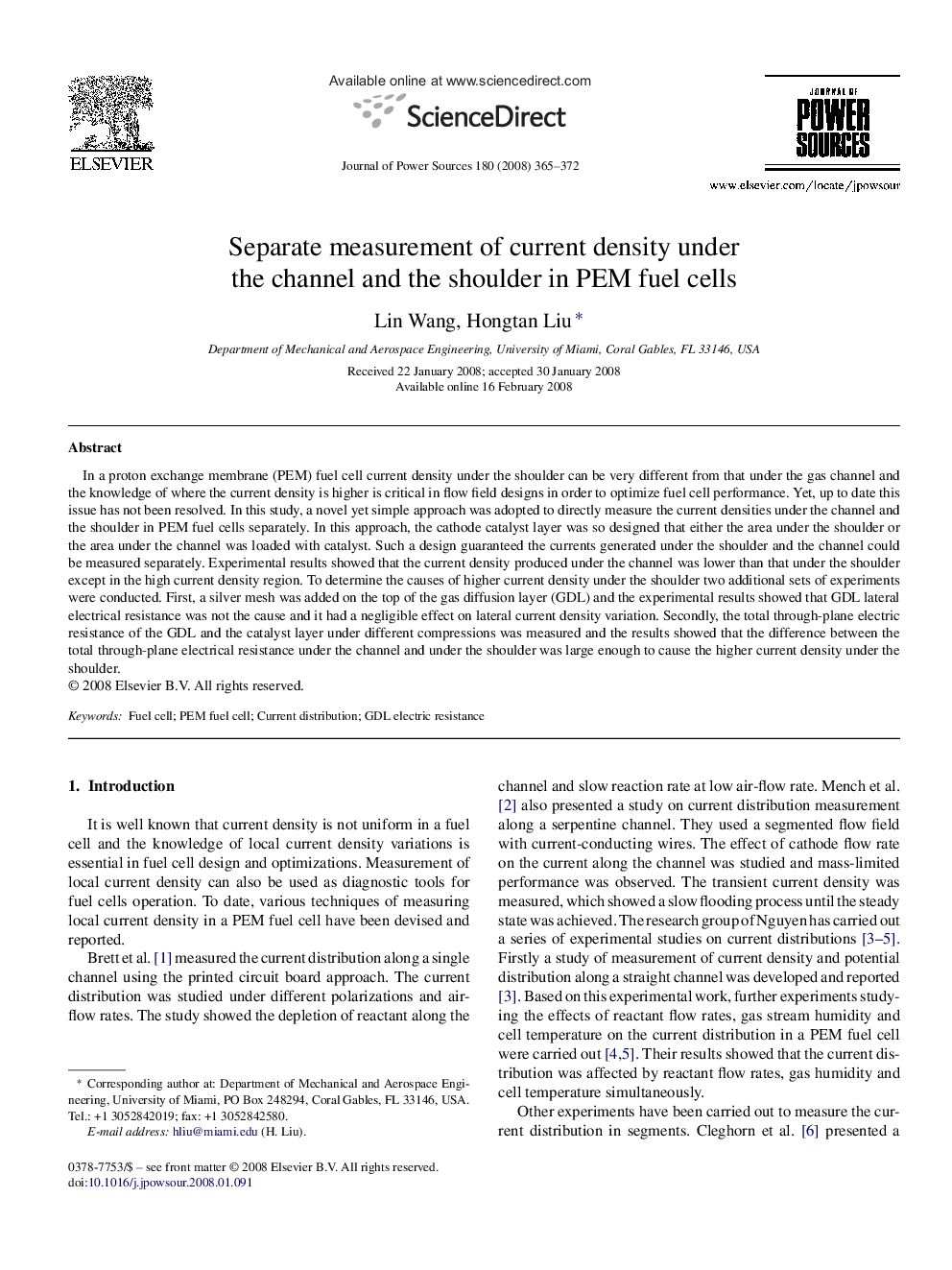| Article ID | Journal | Published Year | Pages | File Type |
|---|---|---|---|---|
| 1290583 | Journal of Power Sources | 2008 | 8 Pages |
In a proton exchange membrane (PEM) fuel cell current density under the shoulder can be very different from that under the gas channel and the knowledge of where the current density is higher is critical in flow field designs in order to optimize fuel cell performance. Yet, up to date this issue has not been resolved. In this study, a novel yet simple approach was adopted to directly measure the current densities under the channel and the shoulder in PEM fuel cells separately. In this approach, the cathode catalyst layer was so designed that either the area under the shoulder or the area under the channel was loaded with catalyst. Such a design guaranteed the currents generated under the shoulder and the channel could be measured separately. Experimental results showed that the current density produced under the channel was lower than that under the shoulder except in the high current density region. To determine the causes of higher current density under the shoulder two additional sets of experiments were conducted. First, a silver mesh was added on the top of the gas diffusion layer (GDL) and the experimental results showed that GDL lateral electrical resistance was not the cause and it had a negligible effect on lateral current density variation. Secondly, the total through-plane electric resistance of the GDL and the catalyst layer under different compressions was measured and the results showed that the difference between the total through-plane electrical resistance under the channel and under the shoulder was large enough to cause the higher current density under the shoulder.
